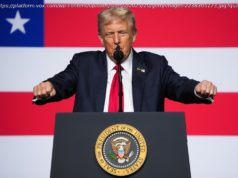Lieutenant Hudner defied expectations when he tried to rescue the Navy’s first black aviator during the Korean War. He was awarded the Medal of Honor.
On the afternoon of Dec. 4,1950, shortly after China had entered the Korean War, Thomas J. Hudner Jr., a lieutenant junior grade, was piloting one of six Navy Corsairs on a three-hour “roadrunner” mission near the Chosin Reservoir, in Korea’s northeast.
After 45 minutes aloft, at roughly 6,000 feet and five miles behind enemy lines, Lieutenant Hudner watched in horror as a plane operated by a squadron mate, Ensign Jesse L. Brown, was hit by small-arms fire. Losing pressure quickly and too low to bail out, Ensign Brown needed to land. Lieutenant Hudner, among others, directed him by radio to a clearing on a snow-covered mountainside, where his colleague crash-landed belly in.
Others in his formation were sure that Ensign Brown had been killed on impact; the mission leader summoned a helicopter to collect his body. But when Lieutenant Hudner lowered his altitude to make sure, he was amazed at what he spotted.
“I rubbed my eyes to make sure that I wasn’t seeing things,” he told Flight Journal in 2005. “The canopy slowly rolled back, and Jesse waved at us!”
The Marine rescue helicopter would not reach the scene for a half-hour. In the meantime, Lieutenant Hudner, 26, saw that smoke was rising from under the cowling, or engine casing, of the downed plane, and that Ensign Brown, 24, appeared stuck inside. If the fire didn’t kill him, he feared, the cold would. He resolved instantly to go in to fetch him.
“I was not going to leave him down there for the Chinese,” he later said.
For what followed — he crash-landed his own plane, then tried unsuccessfully to pry his dying squadron mate out from under his battered fuselage in subzero temperatures while Chinese troops hovered — Lieutenant Hudner collected the first Medal of Honor awarded during the Korean War.
But his feat was not purely a military one. It doubled as a civil-rights milestone: Ensign Brown was the Navy’s first black aviator, and in going to rescue him, Lieutenant Hudner, who died on Monday at 93, defied the expectations of some and defeated a different sort of foe.
When President Harry S. Truman integrated the armed forces two and a half years earlier, some expressed doubts that white and black soldiers would stand by one another in the heat of battle. But Ensign Brown’s race was immaterial to Lieutenant Hudner, and that was precisely the point.
“A lesson in the brotherhood of man,” a leading black weekly, The Norfolk Journal and Guide, wrote. One letter among many by black admirers said of Lieutenant Hudner — who had no black classmates at the Naval Academy — “I never thought a white man would help out a black man like that.”
Only later, after he had returned home, did Lieutenant Hudner learn that what he did that day in Korea could have gotten him court-martialed.
“The fact that it happened was not met with great joy by a lot of people,” he recalled in a 2013 interview with the filmmaker Charles Stuart. “Apparently our squadron captain, commander, said, ‘Now if anybody goes down, I don’t want to have any heroes here trying to crash-land this airplane.’ The very thing that I did later on, I didn’t know that was a direct violation of orders.”
Mr. Hudner’s death, at his home in Concord, Mass., was announced by the Massachusetts Department of Veterans Services.
Thomas Jerome Hudner Jr. was born on Aug. 31,1924, in Fall River, Mass. His family owned a chain of meat and grocery stores. After graduating from Phillips Academy in Andover, Mass., he was appointed to the Naval Academy in 1943 by Representative Joseph W. Martin Jr., then the House minority leader. He graduated in 1946 and earned his wings in 1949.
Ensign Brown, of Hattisberg, Miss., came up through the naval aviation cadet program, overcoming racial bias along the way, and had earned his wings the year before.
Assigned to the same 15-man squadron, the two first met in the fall of 1949 while changing into their flight gear in a locker room at the naval air station at Quonset Point, R. I. As Mr. Hudner recalled it, Ensign Brown did not extend his hand for fear of embarrassing him if he did not want to shake it. So Lieutenant Hudner walked across the room and extended his.
War broke out in Korea in June 1950, and that August the aircraft carrier on which their squadron, VF-32, was based, the U. S. Leyte, was deployed there. On Sept. 15, United Nations forces landed at Inchon, and when tens of thousands of Chinese soldiers crossed into Korea in October, the squadron’s mission suddenly changed from offense to defense — to slowing the Chinese advance and protecting the outnumbered United Nations forces on the ground.
Though technically junior to Lieutenant Hudner, Ensign Brown had logged more air time, and was therefore section leader; Lieutenant Hudner was his “tail end Charlie,” flying at his rear that day, Dec. 4.
On seeing that Ensign Brown was alive after his crash landing, Lieutenant Hudner tightened his harness, jettisoned all excess weight, and landed, wheels up, within 100 yards of the wreck in two feet of snow. He found Ensign Brown conscious and calm, bareheaded, his fingers frozen, unable to reach his fallen gloves and helmet.
“We’ve got to figure out how to get out of here,” Ensign Brown told him.
Lieutenant Hudner removed the woolen watch cap he had carried in his flight suit, placed it over Ensign Brown’s head and wrapped Ensign Brown’s hands in an extra scarf. Then he looked into the cockpit. The ensign’s right knee was crushed and jammed between the fuselage and the control panel.
With only one hand available — he needed the other to hold on to the plane — Lieutenant Hudner could not extricate him. He radioed the incoming helicopter to bring an ax and a fire extinguisher. The trapped man, he later recalled, “was very stoic.”
“He was motionless and slowly dying,” he said.
Lieutenant Hudner packed snow around the smoking canopy to keep any flames away. But the hatchet the helicopter pilot brought just bounced off the unyielding metal, and amputation was not an option: The rescuers could not get deep enough inside the cockpit.
“If anything happens, tell Daisy I love her,” Ensign Brown told Lieutenant Hudner, referring to his wife. With nightfall rapidly approaching, the helicopter had to leave. Lieutenant Hudner promised Ensign Brown that he would return soon with better equipment.
“It was a baldfaced lie,” he said later; he knew he could never get back in time. By the time Lieutenant Hudner had left him, in fact, Ensign Brown might have already died.
Ensign Brown’s squadron mates later returned to the site, drenched the body with napalm and set it ablaze to prevent it from being desecrated.
Ensign Brown posthumously received a Distinguished Flying Cross.
About four months later, with Ensign Brown’s widow sobbing behind him, Lieutenant Hudner was in the Rose Garden at the White House receiving the Medal of Honor from President Truman.






